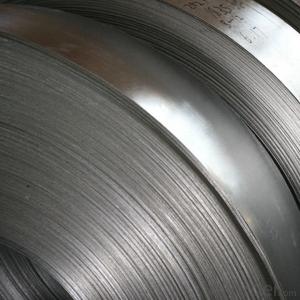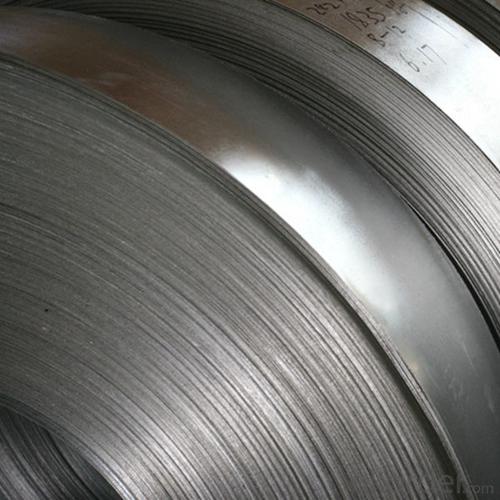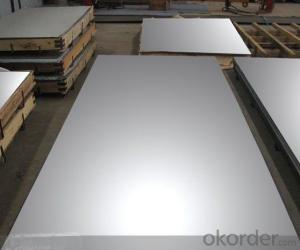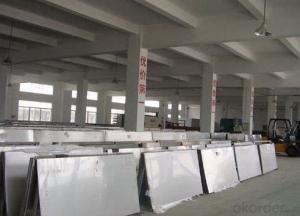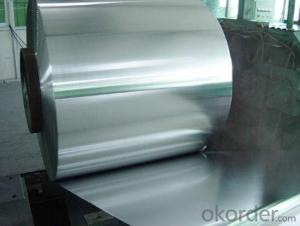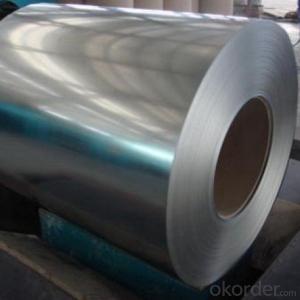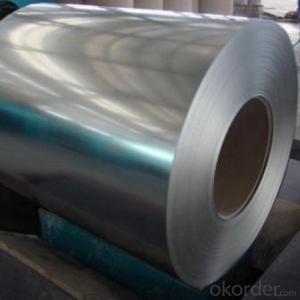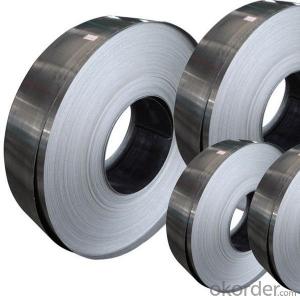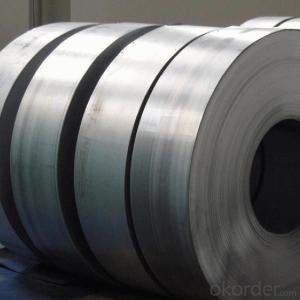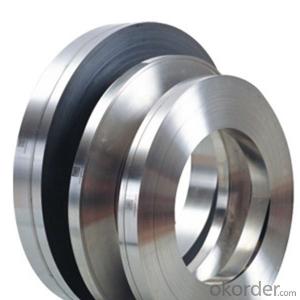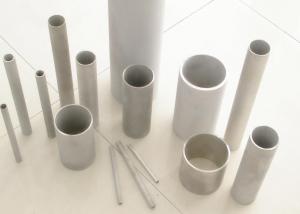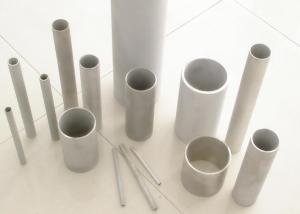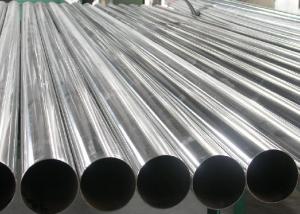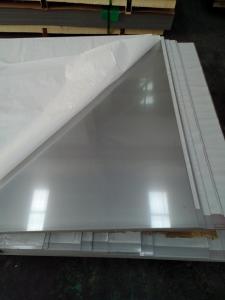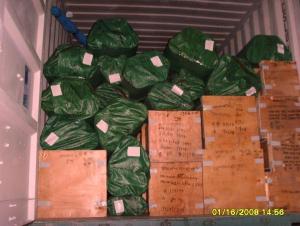Hot Rolled Stainless Steel 316L Grade NO.1 Finish Good Quality
- Loading Port:
- China main port
- Payment Terms:
- TT OR LC
- Min Order Qty:
- 20 m.t.
- Supply Capability:
- 2000000 m.t./month
OKorder Service Pledge
OKorder Financial Service
You Might Also Like
Specification
Description for Stainless Steel Coils/Sheets:
Material | 201/202/301/304/304L/310S/316/316L/321/410/420 |
Technique | Cold Rolled, Cold Drawn, Hot Rolled |
Standard | ASTM,AISI,JIS,GB,DIN,EN |
Thickness | 0.3mm-100mm or as your requirement |
Width | 100mm-3000mm or as your requirement |
Length | 1000mm-10000mm or as your requirement |
Surface Treatment | BA,2B,No.1,No.4,No.8,HL,8K,Brush |
Packing | 1.Export sea worthy package + water proof paper + wooden pallet 2. Max Loading 26.5mt for each 20Gp container 3.Safe loading and fixing Professiona teams 4. Professional shipping line |
Delivery | 5 days after received the 30% deposit of T/T or L/C |
Payment | T/T,30%payment in advance,70%T/T after the copy of B/L or L/c at sight |
Application | Stainless Steel Sheets are widely used in below fields: 1: Construction field, shipping building industry 2: Petroleum and Chemical Industries 3: Food and Mechanical Industries |
Features of Stainless Steel Coils
(1)Good ductility
(2)Good corrosion resistance
(3)Excellent abrasion resistance and fatigue strength
(4)Good weldability
(5)Oxidation resistant performance
(6)Excellent in high temperature
Detail picture for Stainless Steel Coils/Sheets
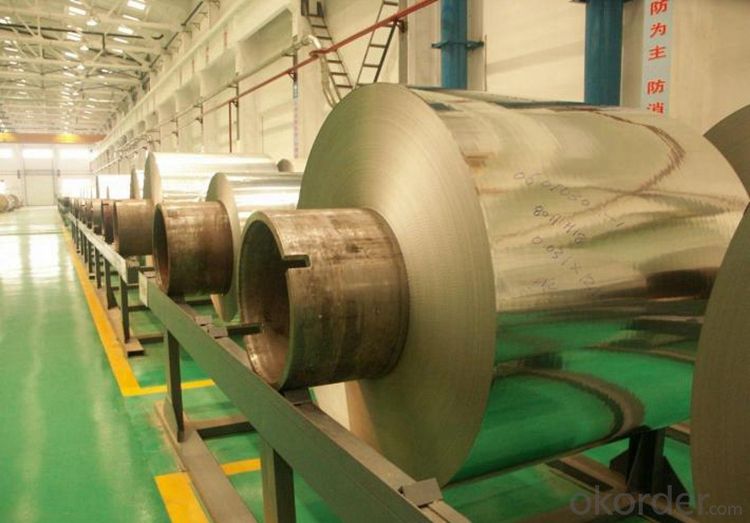
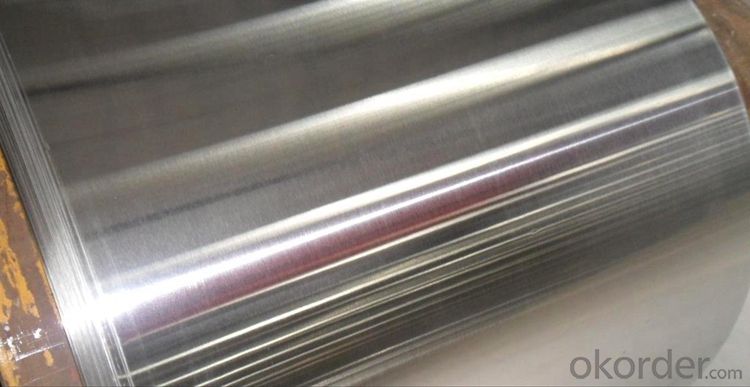
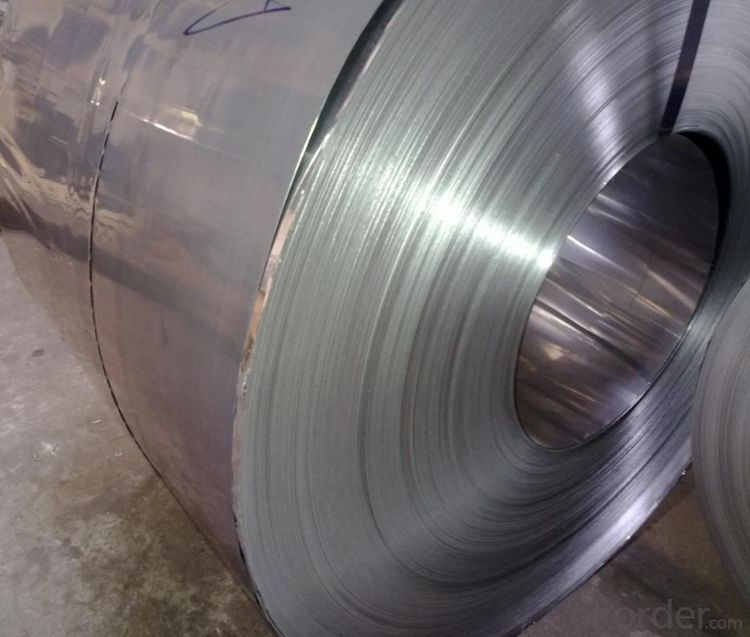
Payment&Delivery for Stainless Steel Coils/Sheets:
Payment Terms | 100% LC at sight,or 30%TT in advance, balance against B/L copy |
Delivery Time | With 30-40 days after deposit |
Price Terms | Ex-Work, FOB, CNF, CFR, CIF,etc |
- Q: Are stainless steel sheets suitable for architectural louvers or screens?
- Yes, stainless steel sheets are suitable for architectural louvers or screens due to their durability, corrosion resistance, and aesthetic appeal. They provide a sleek and modern look while also offering protection against weather elements, making them a popular choice for architectural applications.
- Q: What are the different finishes available for stainless steel sheets?
- Stainless steel sheets come in various finishes, each offering a distinct appearance and level of protection. 1. The most basic and commonly used finish for stainless steel sheets is No. 1 Finish. It is achieved through hot-rolling, resulting in a rough and dull surface with visible grain lines. This finish is typically utilized in industrial applications where aesthetics are not a primary concern. 2. For a brighter and slightly reflective finish, No. 2B Finish is preferred. This cold-rolled finish boasts a smooth surface with a matte appearance, making it ideal for decorative purposes like architectural applications or kitchen appliances. 3. No. 4 Finish, also known as brushed or satin finish, possesses a distinctive look due to its fine polishing grit lines. It is commonly used for decorative applications, such as elevator doors or trim, as it can effectively conceal minor surface imperfections. 4. If a highly reflective finish is desired, No. 8 Mirror Finish is the way to go. It offers a smooth and shiny surface akin to a mirror's polish. This finish is commonly chosen for decorative purposes like architectural features or decorative trim. 5. The Hairline Finish provides a refined and elegant appearance with its fine, brushed texture resembling hair grain. It is commonly employed in decorative and architectural applications. 6. To add texture and visual interest to stainless steel sheets, the Embossed Finish is created through embossing or stamping, resulting in a pattern or design on the surface. This finish is often used for decorative purposes. It is important to note that the availability of these finishes may vary depending on the supplier and the specific grade of stainless steel being used.
- Q: Can stainless steel sheets be used for railway infrastructure?
- Yes, stainless steel sheets can be used for railway infrastructure. Stainless steel is known for its durability, corrosion resistance, and strength, making it suitable for various applications in the railway industry. It can be used for railway tracks, bridges, platforms, and other structures that require high strength and long-lasting performance. Additionally, stainless steel's low maintenance requirements and ability to withstand harsh environmental conditions make it an ideal choice for railway infrastructure.
- Q: What are the different types of stainless steel sheet surface coatings available?
- Different types of surface coatings are available for stainless steel sheets, each providing unique properties and advantages. Some of the most common types are: 1. Natural Finish: Stainless steel sheets without any coating have a smooth and natural surface. This type is commonly used when corrosion resistance is essential. 2. Brushed Coating: This coating creates a distinctive brushed pattern on the stainless steel surface. It adds a decorative touch while also concealing scratches and fingerprints. 3. Mirror Coating: A mirror finish coating gives stainless steel sheets a highly reflective surface, similar to a mirror. This type is popular in architectural and decorative applications. 4. Satin Coating: Satin coatings offer a smooth and matte appearance with low reflectivity. They are often used in high-end appliances and architectural elements. 5. Bead Blasted Coating: This coating creates a uniform and textured surface by bombarding the stainless steel with small glass beads. It provides a unique visual effect and can hide surface imperfections. 6. Patterned Coating: Patterned coatings involve embossing or etching designs onto the stainless steel surface. They can create various patterns and textures, enhancing the aesthetic appeal in different applications. 7. Colored Coatings: Stainless steel sheets can be coated with different colors using processes like powder coating or electroplating. This allows for customization and adds a decorative element to the material. When choosing a surface coating for stainless steel sheets, it is important to consider the specific requirements of your application. Factors such as corrosion resistance, durability, aesthetics, and functionality should all be taken into account to ensure the best choice for your needs.
- Q: What are the different types of stainless steel sheet patterns?
- Stainless steel sheet patterns come in a variety of options. Some of the most commonly used patterns are as follows: 1. The plain or smooth pattern: This pattern is the simplest and most basic, offering a smooth and flat surface. 2. The diamond pattern, also known as tread plate or checker plate: This pattern has raised diamond-shaped ridges, providing excellent slip resistance. 3. The tear drop pattern: Similar to the diamond pattern, this one has raised teardrop-shaped ridges, offering enhanced slip resistance. 4. The linen pattern: This pattern resembles the texture of linen fabric, with a series of parallel lines intersected by a crisscross pattern. 5. The quilted pattern: Resembling a quilted fabric, this pattern has a diamond-shaped or square-shaped design. 6. The hammered pattern: With a textured surface resembling the marks left by a hammer, this pattern adds visual interest and dimension. 7. The perforated pattern: Featuring small holes or perforations in the sheet, this pattern allows for improved ventilation and drainage in certain applications. These examples represent just a fraction of the stainless steel sheet patterns available. Each pattern offers unique aesthetic and functional advantages, providing greater versatility in design and application.
- Q: Can stainless steel sheets be used in architectural designs?
- Certainly, architectural designs can definitely incorporate stainless steel sheets. Stainless steel is a highly adaptable material that offers numerous advantages for architectural purposes. It is renowned for its durability, resistance to corrosion, and attractive appearance, which has made it a favored option among architects and designers. Stainless steel sheets can be utilized in various architectural elements, including cladding, roofing, facades, and decorative features. The sleek and contemporary look of the material adds a touch of sophistication to any design, whether it be a residential building, commercial structure, or public space. One of the primary benefits of stainless steel sheets is their ability to resist corrosion, making them suitable for both interior and exterior use. They can withstand severe weather conditions, UV radiation, and pollutants, ensuring a long-lasting and low-maintenance solution for architectural projects. Furthermore, stainless steel sheets are available in a variety of finishes, such as brushed, polished, and patterned, allowing architects to create distinctive and visually appealing designs. The material can be easily shaped, welded, and fabricated into various forms, enabling architects to achieve their desired architectural vision. Stainless steel sheets also provide excellent fire resistance, making them ideal for applications where safety is a priority. They are non-combustible and have a high melting point, offering additional protection in the event of a fire. Moreover, stainless steel is an environmentally friendly choice. It is 100% recyclable, with a high recycling rate, reducing the demand for new raw materials and helping to minimize waste. In summary, stainless steel sheets are a versatile and durable material that can be effectively utilized in architectural designs. Their resistance to corrosion, aesthetic appeal, fire resistance, and sustainability make them a popular choice among architects and designers for a wide range of applications.
- Q: What is the price range for stainless steel sheets?
- The cost of stainless steel sheets can fluctuate based on several factors, including the thickness, size, and grade of the stainless steel. Typically, thinner sheets begin around $30 per square foot, while thicker or higher-grade sheets can reach up to $150 per square foot. It is crucial to consider that market conditions and supplier pricing policies may also impact prices. Thus, it is advisable to compare prices from various suppliers before finalizing a purchase.
- Q: What is the fire resistance rating of stainless steel sheets?
- Stainless steel sheets lack an inherent fire resistance rating as they are not naturally fire resistant materials. Nevertheless, stainless steel can demonstrate commendable fire resistance attributes due to its high melting point and low thermal conductivity. Consequently, stainless steel sheets are less prone to melting or transferring heat during a fire, thus impeding the spread of flames. Furthermore, stainless steel possesses corrosion resistance, which further bolsters its performance in fire scenarios. However, it should be emphasized that the fire resistance of a structure or system hinges on a combination of diverse factors, encompassing the comprehensive design, construction, and utilization of fire-resistant materials. Consequently, the fire resistance rating of stainless steel sheets may fluctuate depending on the specific application and the overarching fire protection measures implemented.
- Q: What are the common manufacturing standards for stainless steel sheets?
- The quality and consistency of stainless steel sheets are ensured by several common manufacturing standards. One widely recognized standard is the ASTM International standard, formerly known as the American Society for Testing and Materials. Specifically, the ASTM A240 standard specifies the chemical composition, mechanical properties, and other relevant characteristics of stainless steel sheets. Another important standard is the EN standard, specifically EN 10088, which provides guidelines for stainless steel flat products, including sheets. This standard covers dimensions, tolerances, surface finishes, and more. Different countries also have their own national standards. For example, in Japan, stainless steel sheets are classified under specifications such as JIS G4304 and JIS G4305, which are part of the Japanese Industrial Standards (JIS). These standards define the chemical composition, mechanical properties, and surface finishes of stainless steel sheets. In the United States, the American Iron and Steel Institute (AISI) sets standards for stainless steel sheets. The AISI 300 and 400 series are commonly used in manufacturing, and their properties are defined by the AISI. Manufacturers and suppliers must adhere to these standards to ensure that stainless steel sheets meet quality requirements and can be reliably used in various applications. These standards help maintain consistency, compatibility, and traceability in the production and use of stainless steel sheets across industries.
- Q: How do I determine the flatness of stainless steel sheets?
- To assess the flatness of stainless steel sheets, the following steps can be followed: 1. Visual Examination: Initially, visually inspect the sheet for any visible indications of warping, bending, or unevenness. Look for noticeable waves, ripples, or twists on the surface. While this method may not provide precise results, it can give a preliminary understanding of the overall flatness of the sheet. 2. Straight Edge Measurement: Position a straight edge, such as a ruler or long level, on the surface of the stainless steel sheet. Move the straight edge across different areas of the sheet, paying attention to both the center and edges. Observe if there are any gaps or spaces between the straight edge and the sheet. A continuous contact between the straight edge and the sheet suggests a satisfactory level of flatness. 3. Feeler Gauge Utilization: Employ a feeler gauge, which is a precise measurement tool containing thin metal blades of varying thicknesses. This tool can be used to more accurately measure the gap between the straight edge and the stainless steel sheet. Slide the feeler gauge into any gaps between the sheet and the straight edge, noting the blade thickness that fits snugly. This will help determine the extent of any unevenness or bowing present. 4. Laser Measurement: For more accurate measurements, a laser measuring device can be employed. Position the laser device at one end of the sheet and measure the distance from the laser to the surface at different points along the length of the sheet. Repeat this process at the opposite end of the sheet. Comparing these measurements will provide an indication of any variations in flatness. 5. Professional Testing: In cases where the stainless steel sheets are intended for critical applications or when precise flatness is essential, consulting with a professional testing service is advisable. These experts can employ advanced techniques such as optical profilometry or coordinate measuring machines to accurately measure the flatness of the sheet. It is important to acknowledge that due to the inherent characteristics of stainless steel, minor deviations from perfect flatness may be acceptable within industry standards. The required level of flatness will depend on the specific application and the tolerance standards set by the manufacturer or customer.
Send your message to us
Hot Rolled Stainless Steel 316L Grade NO.1 Finish Good Quality
- Loading Port:
- China main port
- Payment Terms:
- TT OR LC
- Min Order Qty:
- 20 m.t.
- Supply Capability:
- 2000000 m.t./month
OKorder Service Pledge
OKorder Financial Service
Similar products
Hot products
Hot Searches
Related keywords
